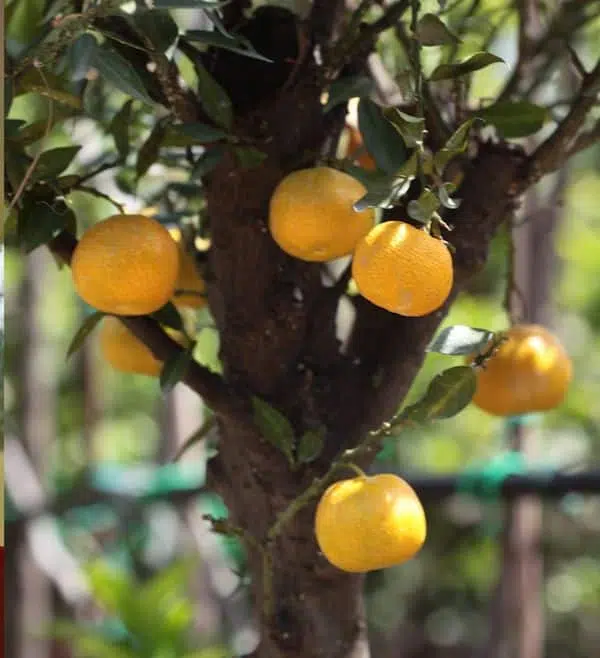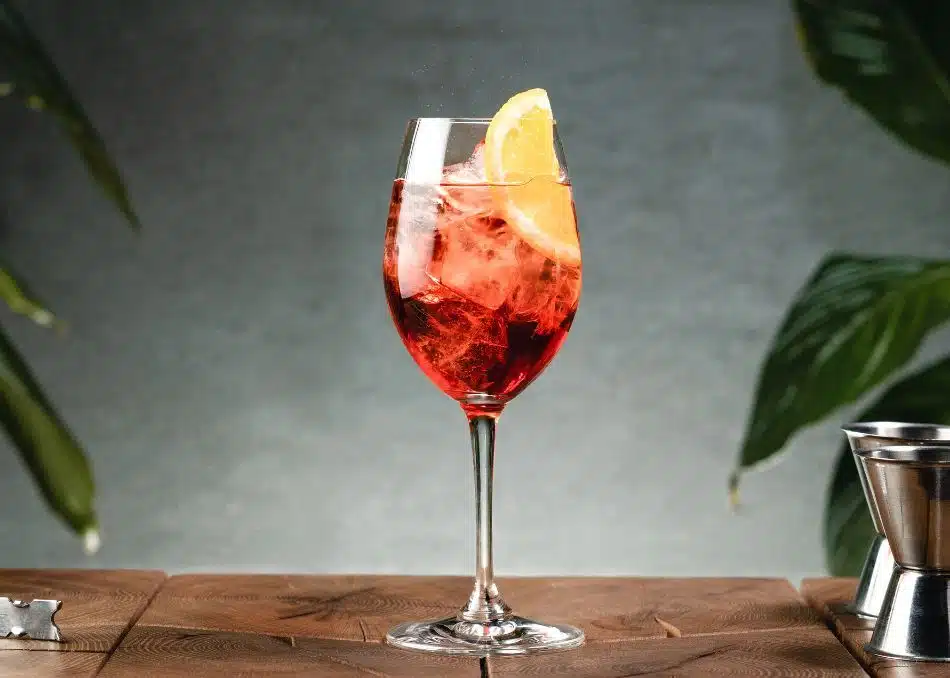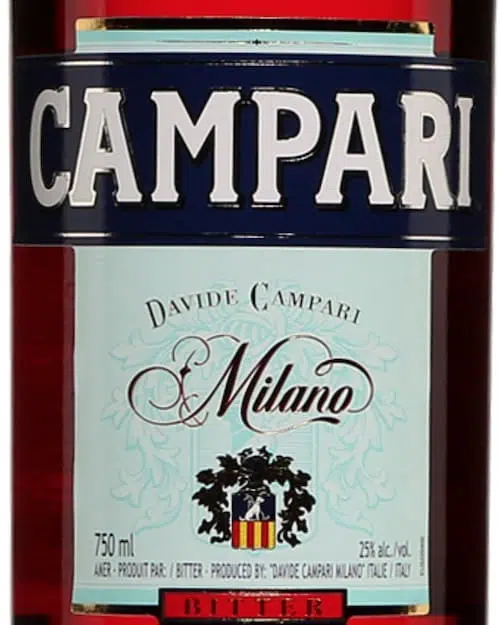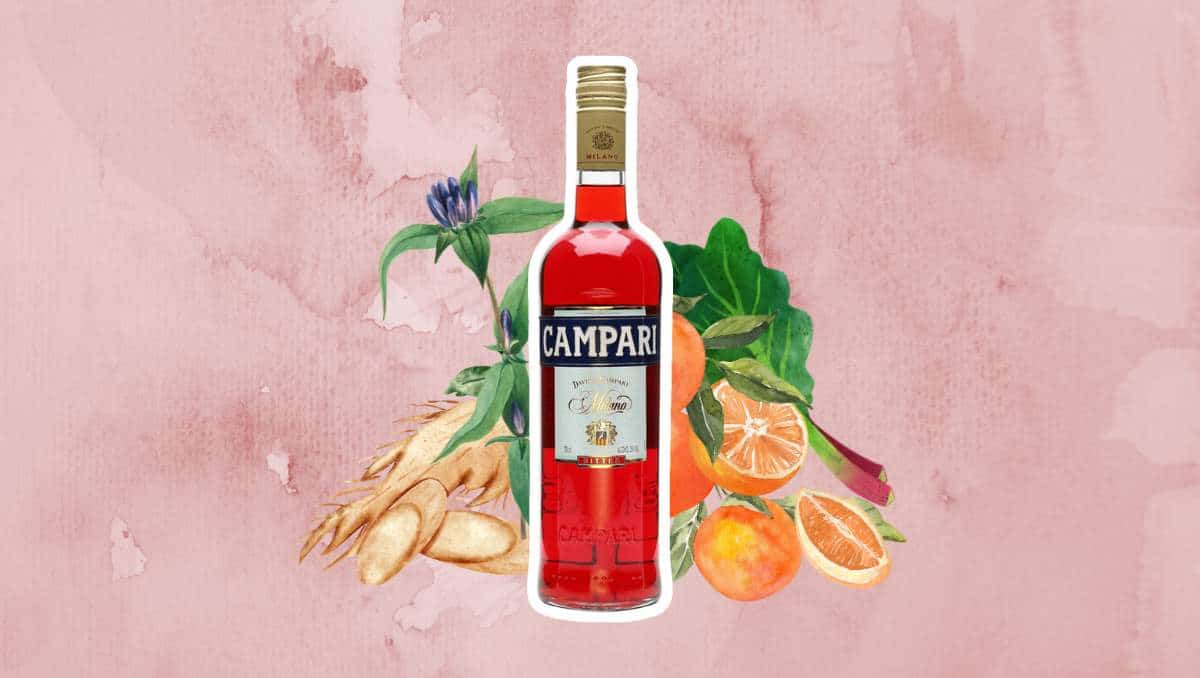Campari is a deep red and bitter liqueur made in Italy. The liqueur is made by infusing alcohol and water with several herbs, fruits, roots, and barks.
Its alcohol content (ABV) ranges from 20.5% to 28% (41 to 56 proof), depending on the country in which it is sold. For instance, in most European countries it has 25%, the US sells Campari at 24%, and Argentina and Brazil are at the top of the range with 28% vol.
The bitter liqueur is a main ingredient in many aperitivo cocktails like the famous Negroni, Americano, and Negroni Sbagliato.
Campari vs Aperol
Campari and Aperol are both popular amaro liqueurs, owned by Gruppo Campari. The main difference is taste: Campari is distinctly bitter and herbal with a more restrained sweetness. Aperol, on the other hand, is much lighter, brighter, less bitter, and with a pronounced orange flavor. The second striking difference is the color. Whereas Campari is a deep reed, Aperol has a bright, vibrant orange color.
Campari is also almost twice as strong as Aperol, with an ABV of 24% to 25% compared to 11% of alcohol by volume in Aperol. This makes Aperol a much lighter and brighter liqueur, perfect for refreshing cocktails like an Aperol Spritz. Generally, if you're new to drinking bitter amaro liqueurs, start with lighter expressions and gradually train your palate to bolder amaro types like Campari or Fernet.
Best Campari substitutes
Depending on how you intend to drink it, the recommended substitutes may vary. Drank neat, Leopold Bros. Aperitivo is the best alternative to Campari. In cocktails and other mixed drinks, Contratto Bitter and Tempus Fugit's Gran Classico are excellent replacements for Campari.
For a detailed look at this topic, check out our guide to the best alternatives to Campari.
What is Campari Made of?

The herbal bittersweet liqueur consists of many, many components. The exact list and number of ingredients are not known. But it's believed to be anywhere from 10 to 70; Quite a range, to be honest.
However, some I can name with a decent degree of certainty. These would be Chinotto, Cascarilla, gentian, orange, rhubarb, and also ginseng.
Chinotto is one of the essential ingredients. The orange-like small fruit has a strong bitter taste and is responsible for Campari's bitterness. In Italy, the small and bitter fruit is also commonly used in carbonated soft drinks.
Additionally, there are a number of dried herbs needed. But no one exactly knows what they are. Well, no one besides the factory director. But whatever the recipe is, it's still the original version Gaspare Campari created in 1860. -Long live tradition.
Campari's Bold and Bitter Flavor Profile
The flavor of Campari is complex with a strong bitter flavor, a distinct herbal taste, hints of oranges and cherry, and spicy notes of clove and cinnamon.
If you try the red bitter for the first time, you most likely will not be positively surprised. It offers quite a complex and unique flavor profile you probably need to get used to before you can really enjoy it.
On the first sip, you notice the intensely sweet and bitter notes. Only once you overcome the initial boost of bitterness can you taste the herbal and fruity, citrus notes of the liqueur.
It's hard to describe and definitely impossible to compare with other liqueurs. It's an acquired taste, but once you get used to it, you'll find many subtle aromas like orange peel, arugula, various herbs, and hints of cinnamon.
How to Drink

In Italy, Campari is often served on the rocks with an orange peel garnish. The rest of the world prefers to mix this red bitter liqueur into cocktails. The herbal ingredients make it ideal for drinks like aperitivo cocktails (aperitifs) and digestivos (digestifs). These drinks either prepare your stomach for an upcoming meal (aperitifs), stimulate appetite, or help your body with digestion (digestif).
Campari-forward recipes like a Negroni or Americano are often overpowering for people new to the bitter taste. If that's the case with you, start slowly with a Garibaldi cocktail - a concoction of Campari and orange juice.
History of the iconic bitter liqueur
Gaspare Campari invented the iconic liqueur in 1860 in Novara, Italy, a city in the Piedmont region, just west of Milan.
The story behind the company
The first production plant was established about 44 years later in Sesto San Giovanni. Sesto, as it's often called, belongs to the Metropolitan region of Milan.
Since then, Campari and Milan belong together. And on today's bottles, you can still find a prominent mention of Milan on the upper part of the bottle label.

Gaspare Campari was responsible for the original recipe. But it wasn't until his son Davide took over that the company began to grow and export its product. Nowadays, the brand sells in more than 190 countries.
And it's no longer just Campari. In fact, Gruppo Campari owns around 45% of the global liqueur market. They acquired Aperol and other famous Italian brands like Frangelico, Amaro Averna, and Cynar.
Were insects used to color Campari?
As I said before, Campari itself is mostly recognized by its color and taste. Because both were so unusual, people started to wonder.
Eventually, they came up with the idea that Campari would use insects to color the liqueur. And, believe it or not, that turned out to be true.
The original version used carmine dye to create the iconic color. And carmine is made of crushed cochineal insects. However, in 2006 this stopped, and they began using artificial colors for the liqueur.
But people didn't only wonder about the iconic color. They also were curious about the intense bitter and herbal taste.
The exact ingredients are a well-kept secret, though. What we know is that Chinotto and Cascarilla are part of it. But let's have a closer look at the ingredients.
Campari Cocktails

Cocktail recipes rarely ask for a specific brand of alcohol but are often paired with gin. There are plenty of Italian aperitifs and classic cocktails based on the bittersweet Italian liqueur, even in the standardized IBA list for drink recipes. Here's a list of drinks to make with Campari:
- Negroni: The drink made of equal parts Campari, gin, and sweet vermouth. Garnished with an orange peel it is probably the most iconic drink based on the red bitter liqueur.
- Americano: This forerunner of the Negroni is made with Campari, sweet vermouth, and chilled soda water. Garnished with an orange slice, it's a refreshing aperitif cocktail.
- Negroni Sbagliato: This twist on the classic Negroni uses Prosecco instead of gin.
- Boulevardier: A whiskey-based version of the Negroni.
But also outside the IBA-listed drinks, many classics ask for Campari as an ingredient, like the Garibaldi, Jungle Bird, and Negroni Spritz, to name just a few.

